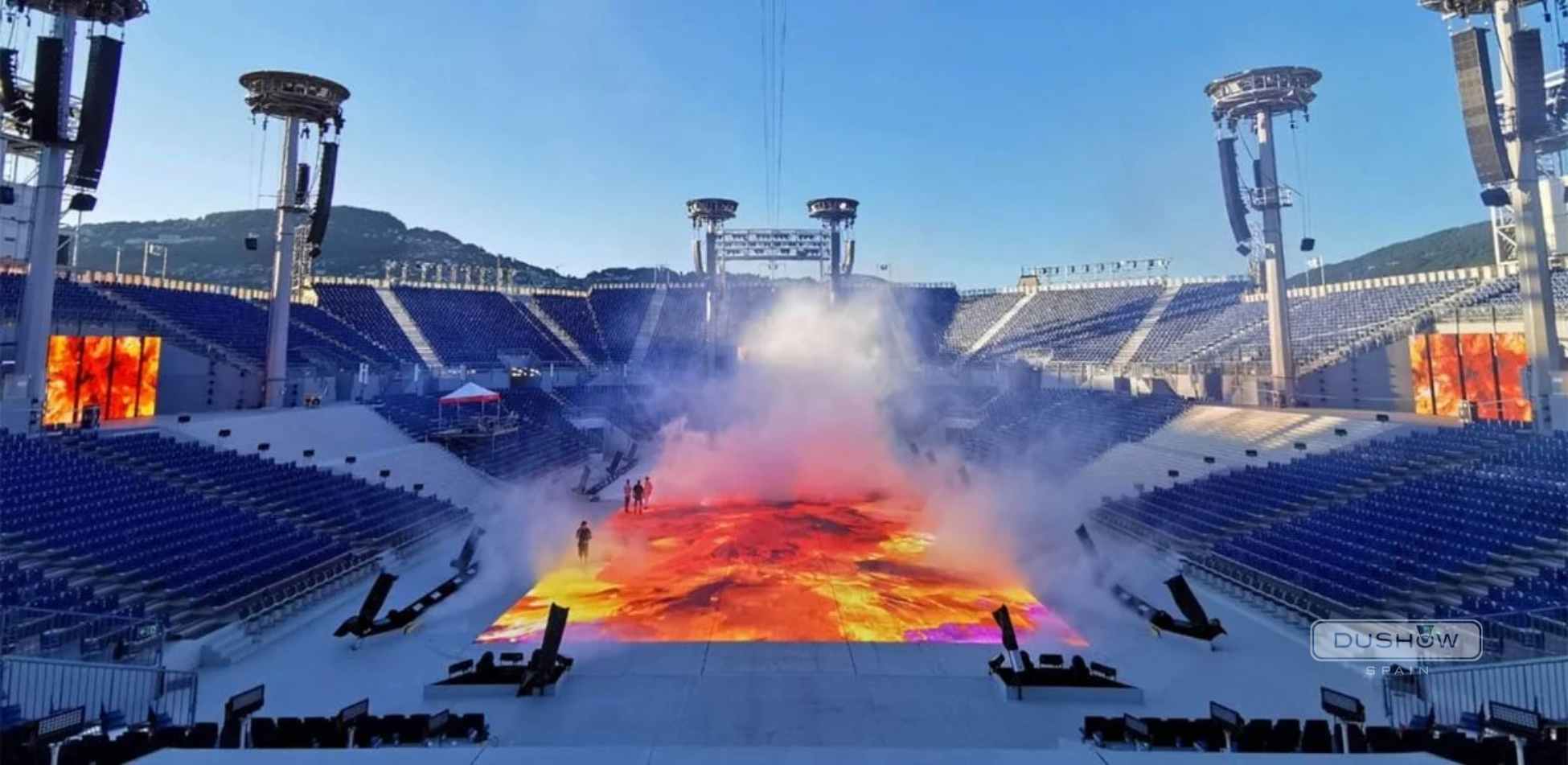Dushow Spain is now Novelty Spain
Keys for management of event sound AND LIGHTING: What factors should you consider?
An event can be considered successful when each of the elements compromising it works properly, and in synch with all the others.
But, if event sound and lighting fails, it can have a knock-on effect that defeats the entire purpose of your meeting. Even if the projection of contents work perfectly, if your audience can’t hear or see what they are meant to at all times, the message of the event will not reach them.
This article will help you understand the keys to managing event sound and lighting. Ready to start?
What factors should I consider before defining the set-up for my event sound and lighting?
Deciding on the set-up for your event sound and lighting is not only about the quality of the equipment, but also the different variables that must come together. This post will give you tips on the factors to consider:
Type of event
The role of event sound and lighting will be determined by the kind of event you’re planning.
For example, if you’re preparing a product presentation or convention, what matters most is that the speakers’ or presenters’ voices be clearly heard throughout the venue. It’s what we call “intelligibility”: the capacity to perfectly listen to and understand the spoken message. What is the point of trying to communicate if you are heard, but not understood? Equally important is that these speakers or presenters are seen correctly from any perspective with the right lighting, not too dark, not too bright.
But if it is an artistic show, then power, and many other elements necessary for sound and lighting to accompany the performance must be added to intelligibility. Human emotions respond to a wide range of stimuli. In the case of event sound, it can be broken down into the spectacular quality found in, for example, sensory elements boosted with a prominent, restrained (but resounding) sub-bass. It’s not enough for event sound to be heard; it must move. For the visual spectacle, for example can be used smoke machines to create an atmosphere that emphasizes light beams as attendees file into the main room, creating a unique entrance experience.
If, on the other hand, the event is a celebration, sound and lighting will stay in the background as a backdrop, or accompaniment. Unless, of course, the laser lights increase, decibels rise and the event becomes a party. In that case, sound and lighting returns to the spotlight to take a leading role.
In short, considering the role that sound and lighting will play at your event is the first step to take before moving on to the next stage.
Event space
Sound is a vibration that travels through the air until it reaches your ears. That is why the different elements that sound waves may encounter on their way can also play a significant role. If the event is outdoors, then a number of external, hard-to-control factors will come into play, such as ambient noise, traffic and nature itself. In addition, as it is not confined to a closed space, sound will be dispersed, so you will probably need more power and better distribution of loudspeakers.
The situation is different if your venue is a closed space. If the facility was built (or at least adapted) for the purpose of holding events, then it is highly probable that it will feature the elements necessary for proper distribution of sound, avoiding echoes and leakage.
A very good example of this are auditoriums and theatres, whose design was conceived for event sound to be uniformly distributed throughout the space, and even unamplified voices can reach all members of the audience.
But these facilities have been designed for performances that do not feature large event sound set-ups: sometimes, a theatre can become a problem if you have to play a soundtrack. You should always analyse, plan and take guidance from a reliable audio-visual partner like Dushow, sometimes just to successfully overcome the most basic challenges.
On another note, when it is a matter of rooms that were not built for hosting events, you will have to make an even greater effort if you want everyone to be able to hear clearly. Ceilings, columns, and other obstructions can be a real headache for crews responsible for event sound.
Some venues already have sound systems installed. In that case, you’ll have to determine if they’re suitable for the kind of event you want to hold, or if you need to outsource external equipment to expand the system.
Lighting, for its part, is visual magic. Is the deliberate use of lighting equipment to create a captivating visual environment, enhance the atmosphere, and highlight key elements, just as sound waves travel through the air to reach our ears. It plays a crucial role in shaping the mood and aesthetic experience for attendees, adding depth, color, and excitement to the event space.
For all these reasons, the space of an event is very important when it comes to sound and lighting.
Will the event be recorded?
A highly relevant detail. To create a video (or simply audio) record of the event, it is essential to remember all of the sources from which you want to capture sound and lighting, to have channels and devices exclusively dedicated to each of them.
For example, sometimes there are conversations that are audible and visibleto their participants, but if there is not a microphone and sufficient lighting for each participant, they will be lost in the final recording.
Essential event sound and lighting equipment and material
It is very important to keep in mind what the essential event sound and lighting equipment and material are.
A sound system comprises equipment to pick up, process and reproduce sound: a microphone, a mixing table and a loudspeaker. From this point on, you can add the necessary peripheral equipment to meet the challenge: more microphones (they are not all suited to all sources), signal line converters (for instruments, computers, musical playback devices, and others), mixing tables according to the needs established and the speaker system best-adapted to each situation. But you must not overlook floor monitors or IEM (in-ear monitors) listening devices for other technical and/or artistic team members, and even the communication system for orders among the production, technical and artistic staff or speakers.
Similarly, lighting equipment at an event consists of essential components to create a visually captivating experience. It includes fixtures, control consoles, and specialized devices such as spotlights, floodlights, and color-changing lights. Additional peripheral equipment, such as filters for light modification and trusses for rigging. Just like a sound system, the right combination of equipment is crucial to meet the specific requirements of the event and enhance the overall visual impact.
We hope that you’ve found this article about event sound and lighting helpful. If you’ve found it useful, please make sure to subscribe to our channel and visit our blog to never miss out on any essential content on the technical production and organisation of events.
This article was first published in Dushow Spain, you can read the original Spanish version here.





